On Wednesday, Secretary for Security John Lee said that around 900 people had “surrendered” themselves to authorities outside the besieged campus of the Hong Kong Polytechnic University.
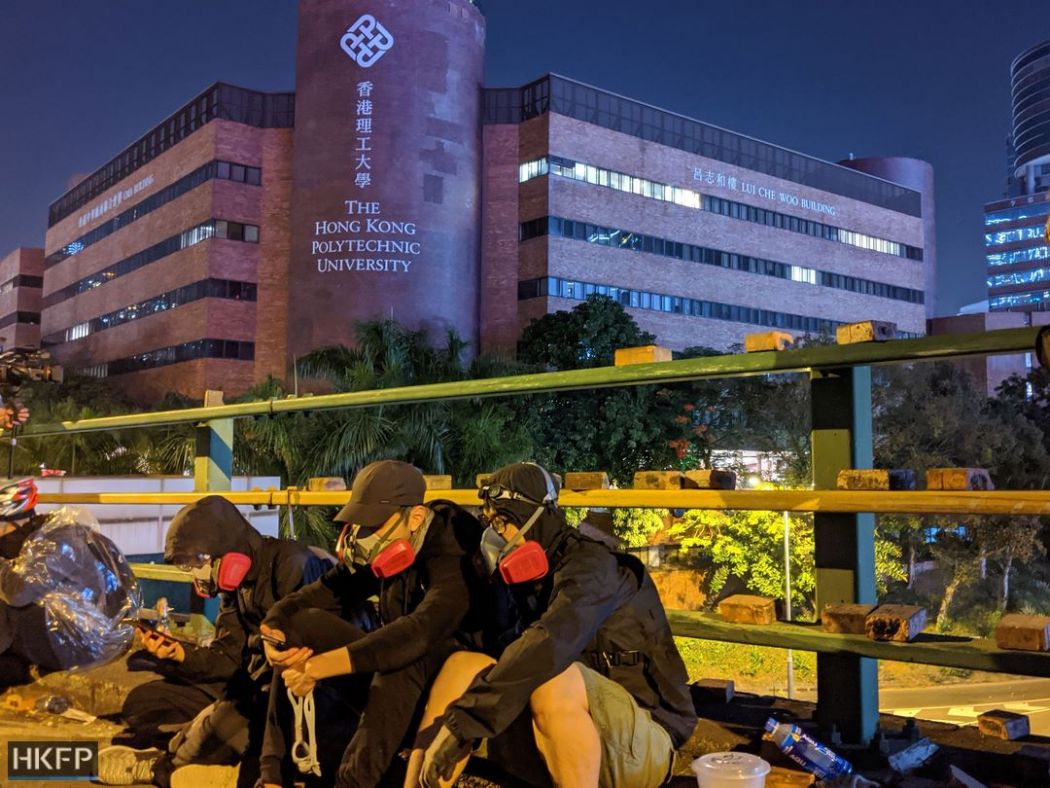
But for the dozens of protesters determined to hold out, the battle was far from over.
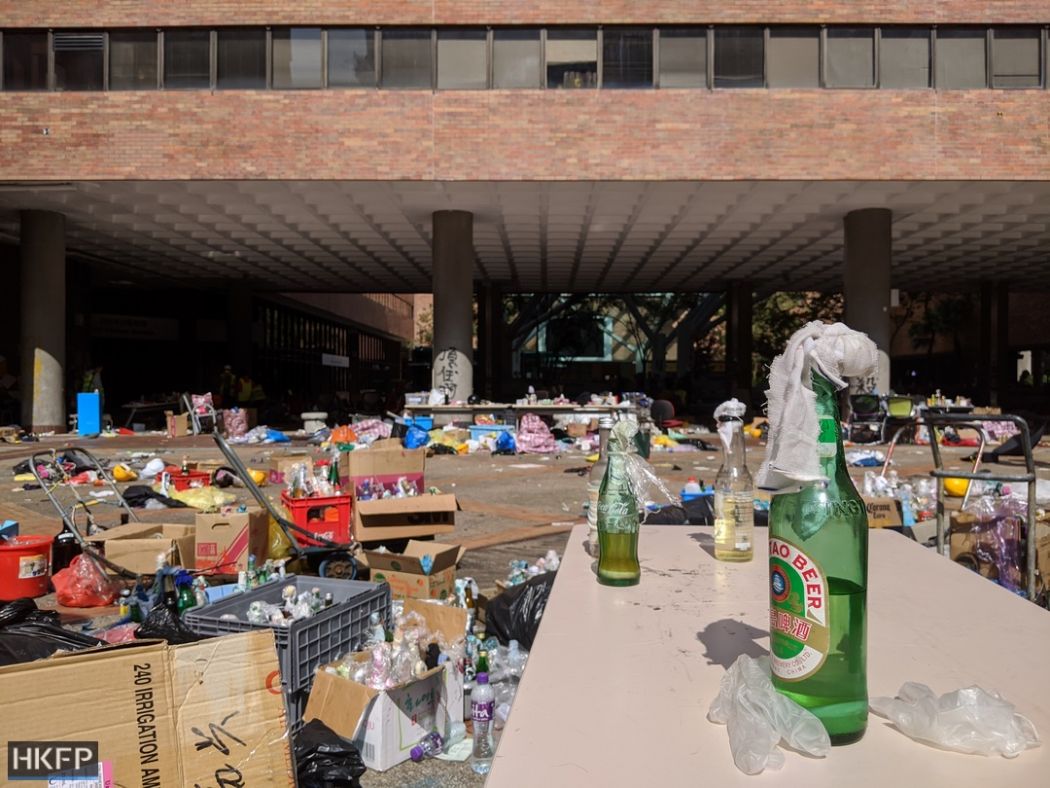
The PolyU campus has become one of the most brutal battlefields between pro-democracy demonstrators and police following 24 weeks of protest and unrest.
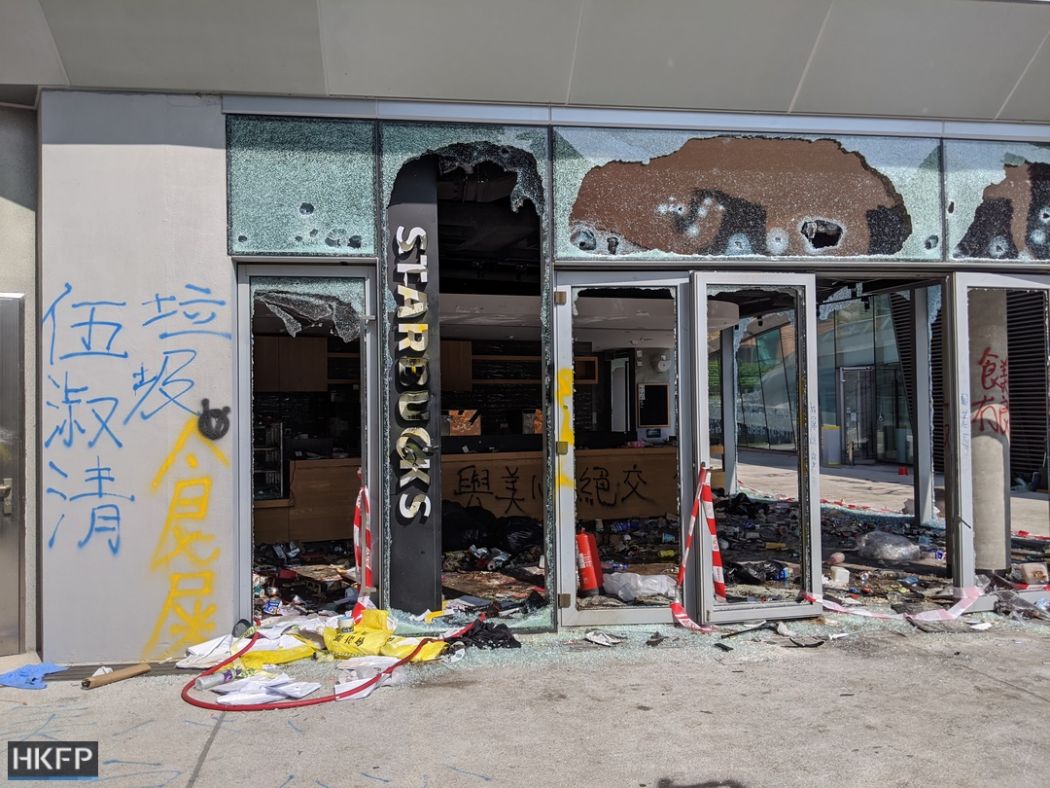
While students had occupied the school for about a week, clashes only escalated on Sunday after police implemented a high-pressure siege tactic.
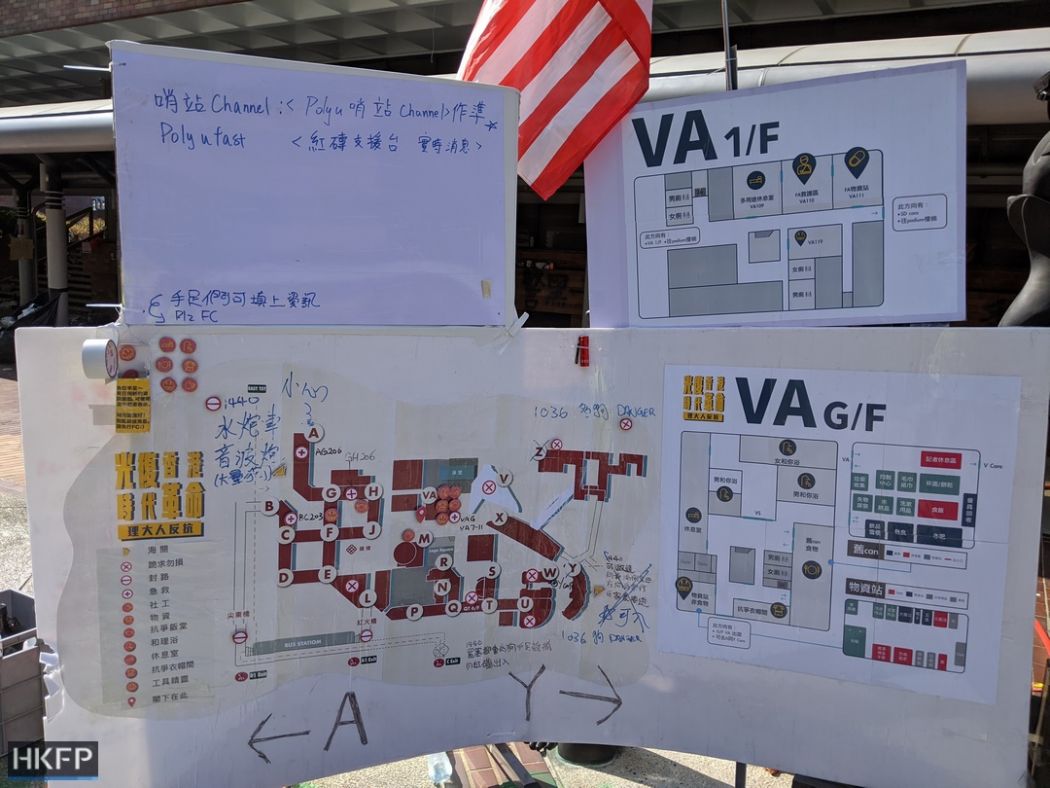
Protesters threw bricks, Molotov cocktails, shot arrows, and launched objects from catapults. Police deployed tear gas, two water cannons, armoured trucks, a variety of projectiles, and threatened to use live ammunition.

The violence reached a fever pitch in the early hours of Monday, when riot police conducted a pre-dawn raid at the PolyU main entrance.
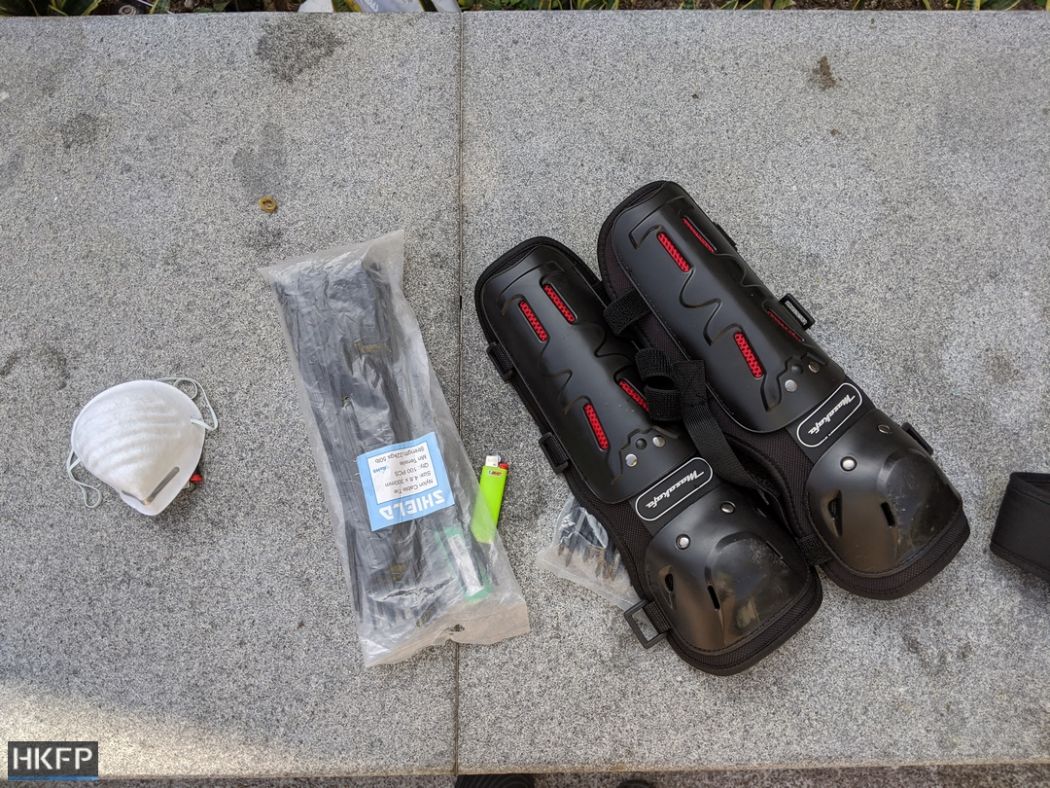
But protesters forced police to retreat by using Molotovs, and days later, the university’s foyer still showed scars of the battle.
With the world watching, the authorities changed tack on Monday night as they sent in mediators to talk the protesters into surrendering. Dozens of demonstrators tried to escape during the lull in the action, but many were apprehended by police officers standing guard.
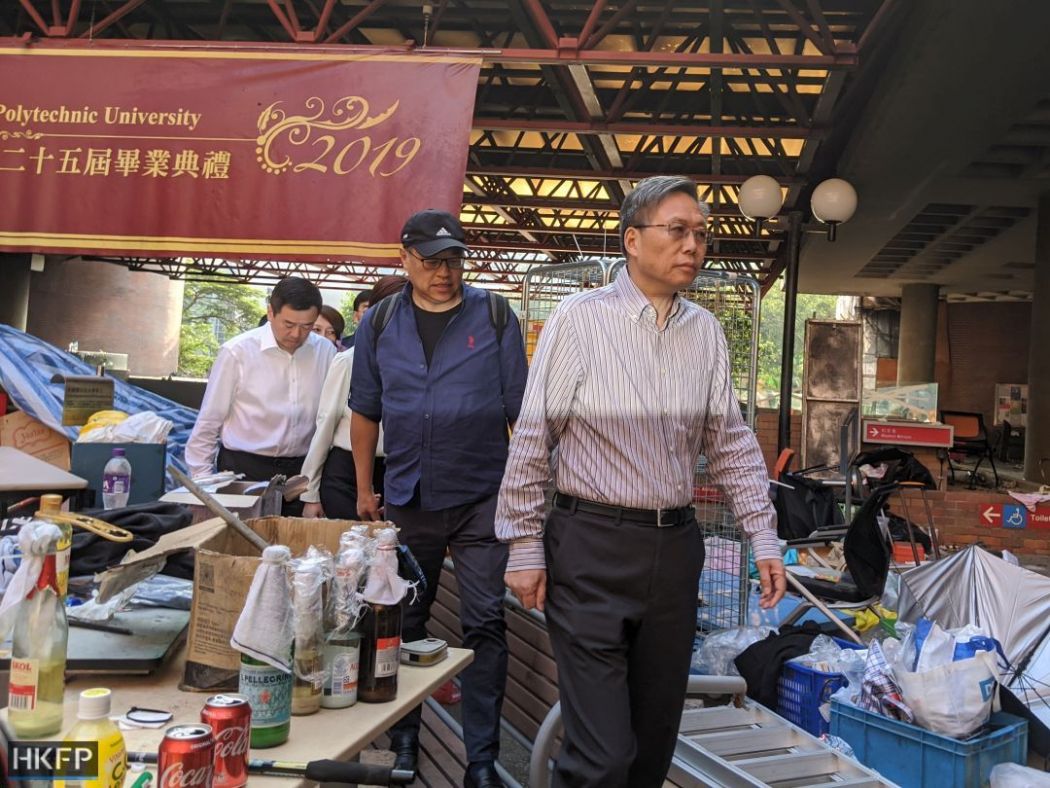
Teng Jin-guang, the head of PolyU, said on Wednesday evening that around 100 protesters remained on the campus.
“I think students shouldn’t use dangerous means to come out, there is no need to take that risk. They can use peaceful means to come out. A lot of people came out and the process was peaceful, safe and fair,” Teng told reporters.

The government has said that any adult walking out of PolyU will be arrested for taking part in a riot.
On the red-brick campus, an atmosphere of deceptive calm masked an undercurrent of despair. A 16-year-old protester, who was wearing full protective gear with rows of lighters strapped to his chest, told HKFP that he was mentally prepared to be shot.
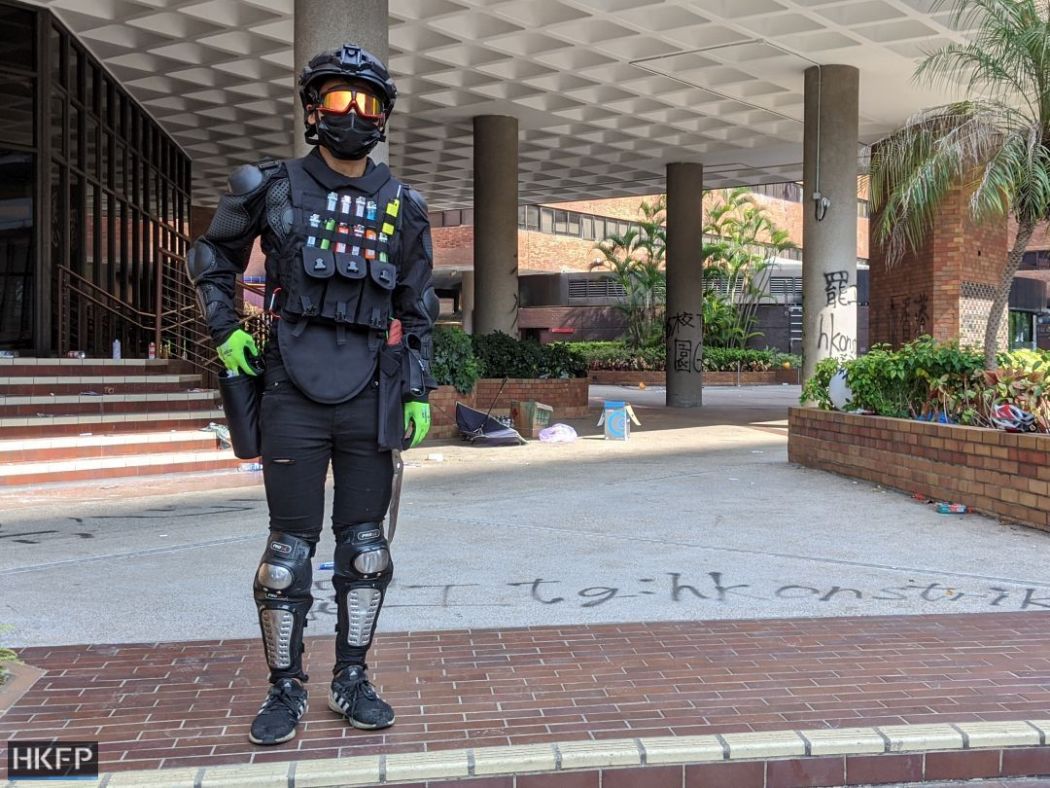
“We will never surrender. We won’t walk out of those doors. We would rather die, before being arrested.”
A costly battle
Since Monday, the trapped protesters have come to realise the full implications of making their stand at PolyU.
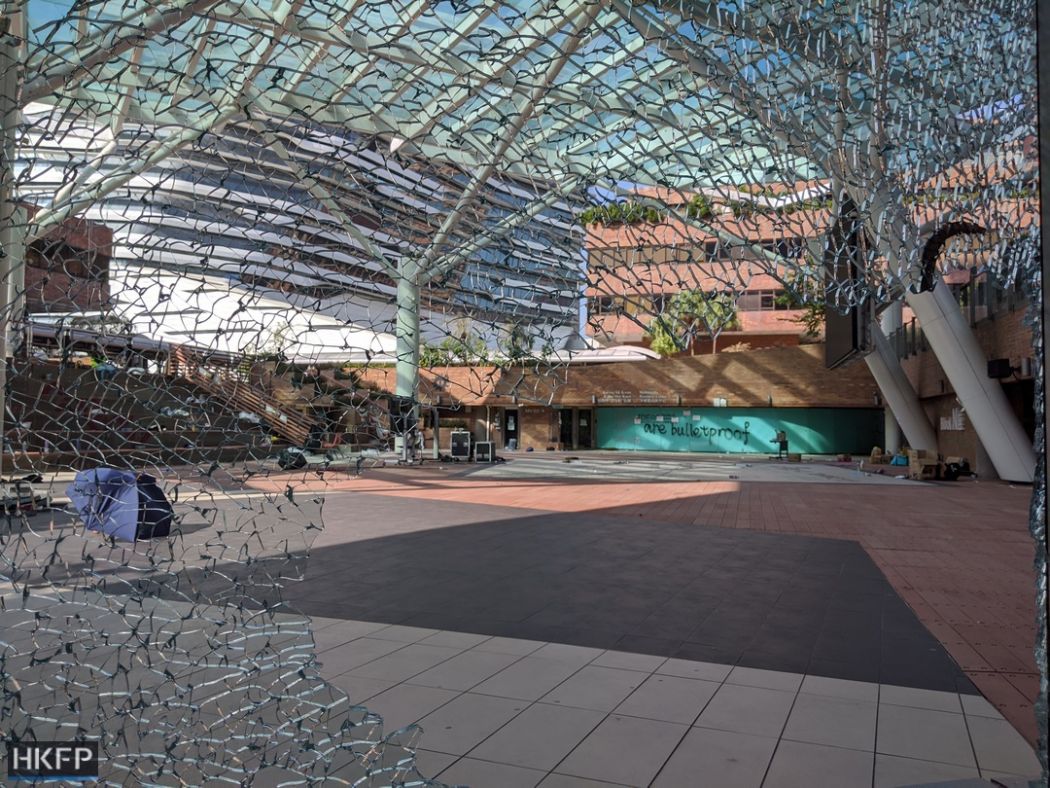
Not only were they facing imminent arrest, many of their supporters intent on “rescuing” them have been arrested by police as well.
At a wall in PolyU, a protester scrawled an apology. “To all comrades: This time we didn’t prepare well at PolyU, and brought a lot of trouble to everyone. We are very sorry.”

Next to the graffiti another wrote: “It’s okay, we forgive you.”
Similar to the clashes at the Chinese University of Hong Kong a week before, the siege of PolyU became a point of grievance for some – speaking to HKFP, a protester who called herself Wing expressed some bitterness.
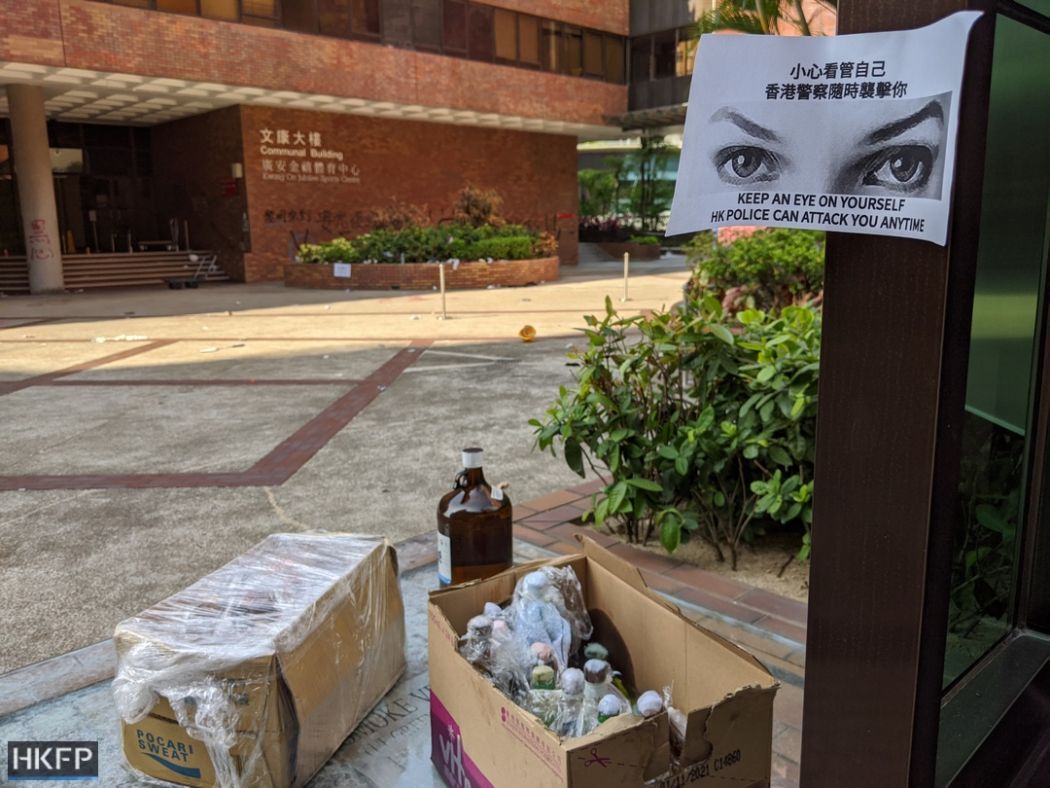
“At first we hoped that the ‘Blossom everywhere’ protests could break the police stranglehold,” she said, referring to the hundreds of people who took to the streets on Sunday and Monday in a rescue attempt.
“But they never managed to break through police lines. So we had no reinforcements, and we had no openings [to escape]. And here we are.”
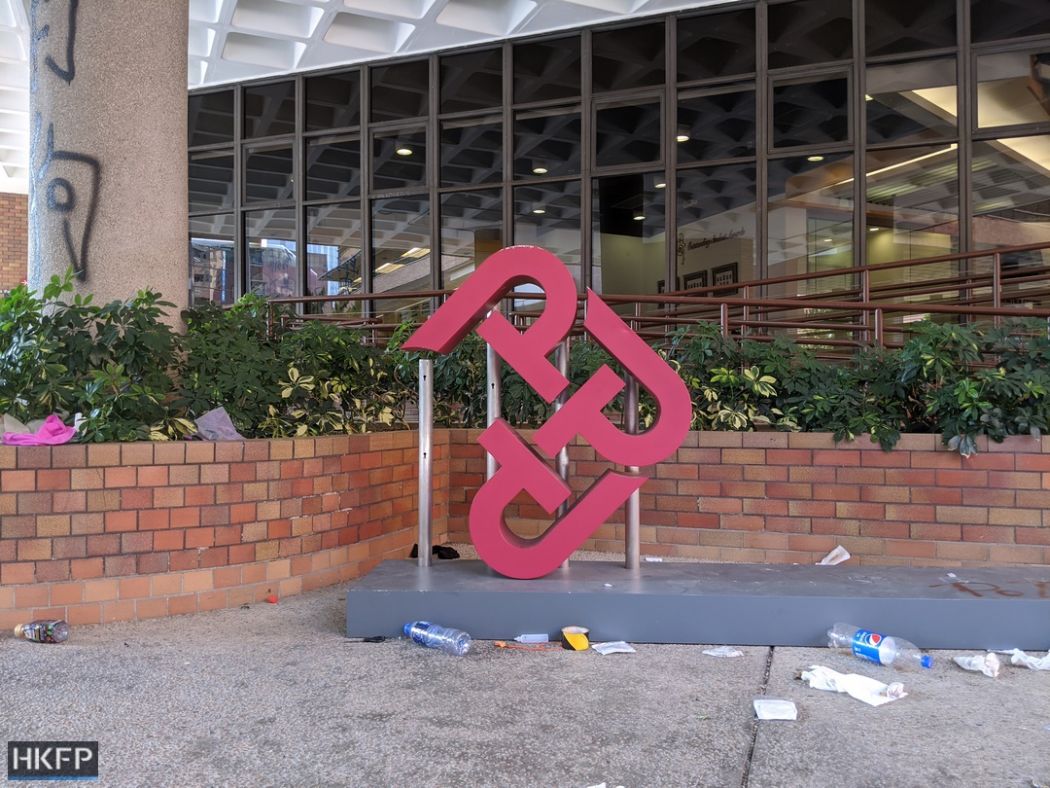
The only bright spot was the dramatic escape by some protesters on Monday night, shimmying down ropes and dashing away on motorbikes. It remains unclear how many protesters successfully fled the police encirclement.
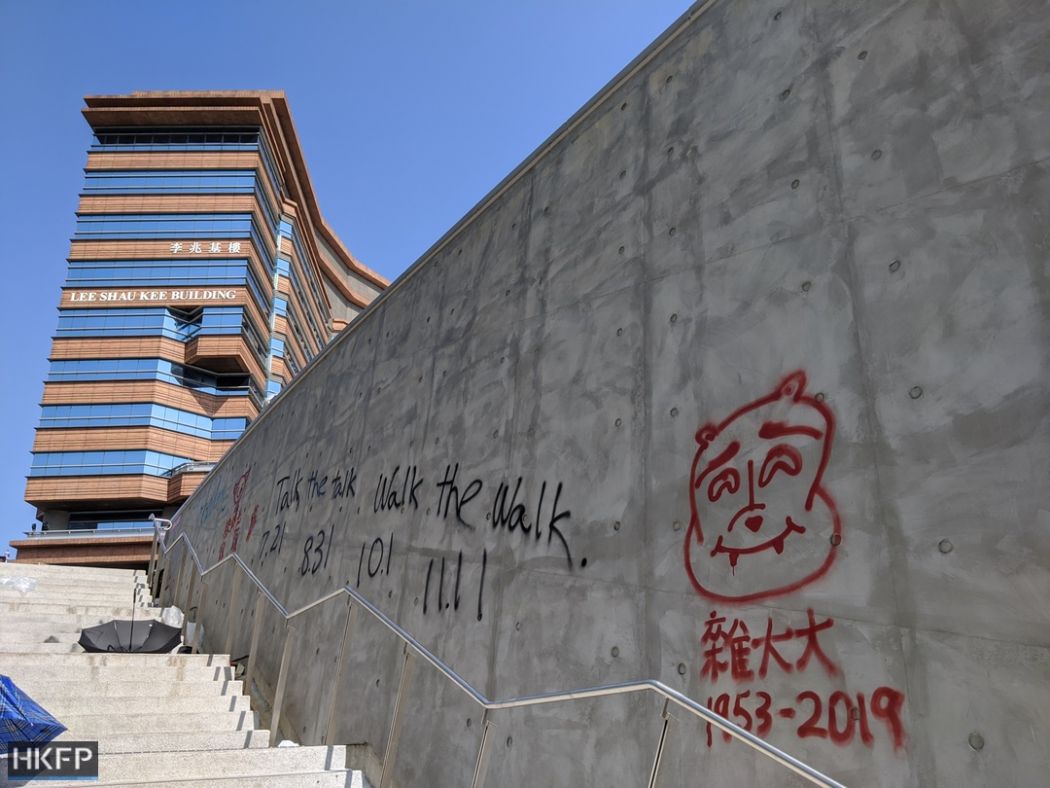
Others chose to leave with the mediators – which included pro-Beijing veteran Jasper Tsang, legal scholar Eric Cheung and a host of secondary school principals – or were carried out by paramedics.
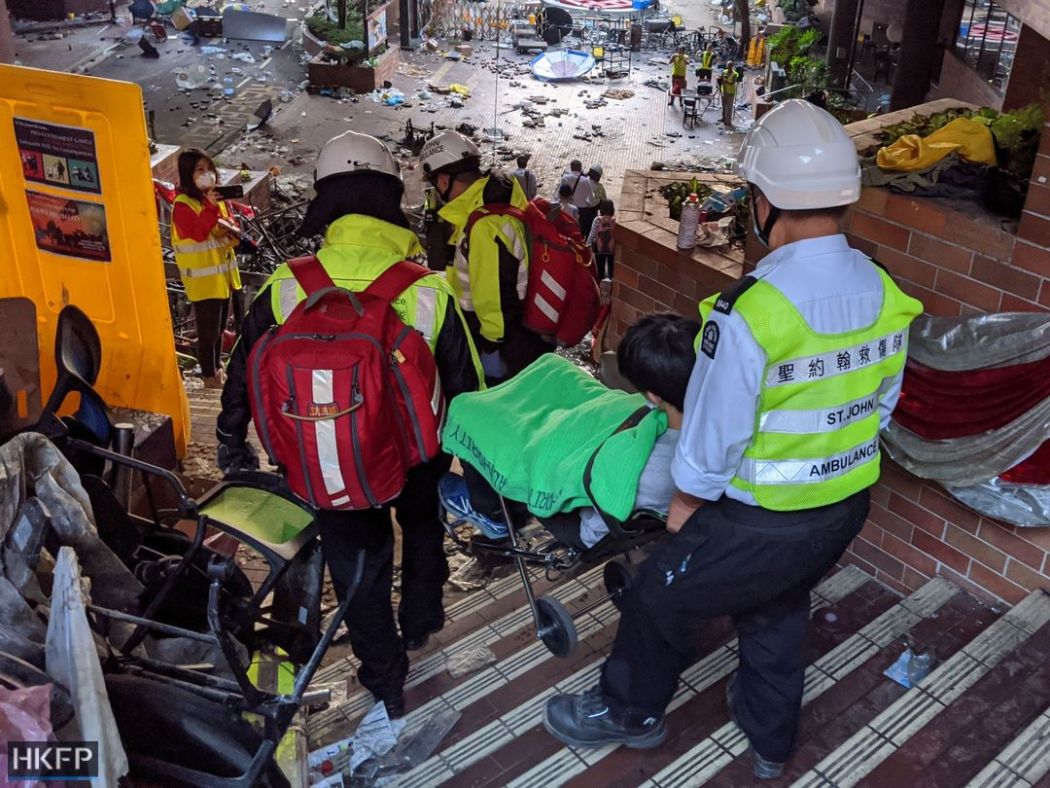
Wing said she understood some people have good reasons for leaving, but one way or another, every new departure meant that the protesters in the campus were losing strength.
“On Sunday we didn’t know if we would win, but at least we had strength in numbers and it was comforting,” she said.
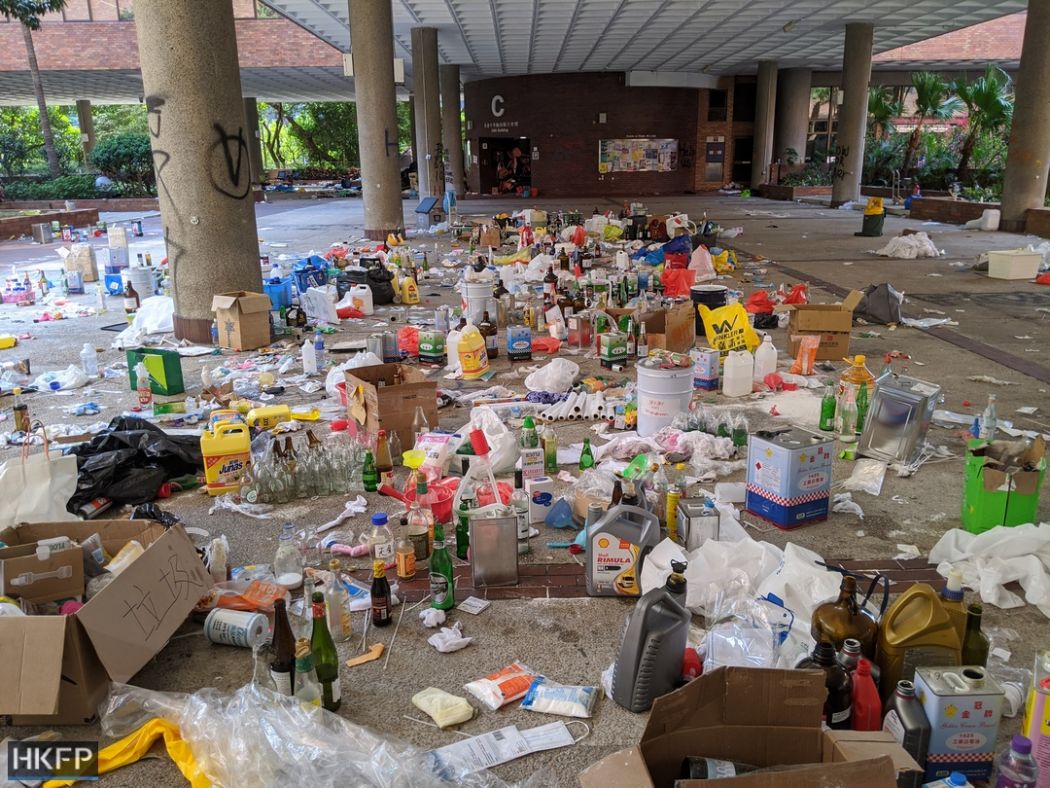
PolyU on Wednesday was quiet, with much of the hubbub coming from journalists or social workers looking for conversation.
Supplies were strewn all across the ground, including ingredients for Molotov cocktails, but the production line activity had halted.
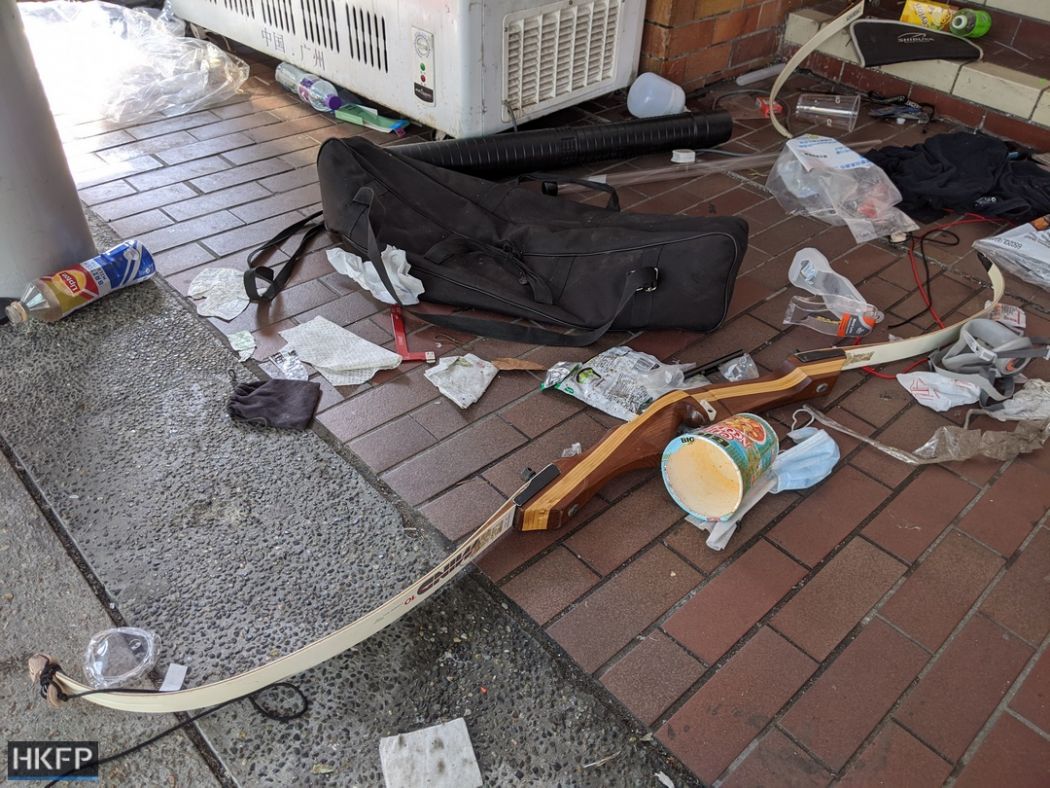
Also strewn on the ground was a sports bow. On Sunday, police said that an officer was hit by an arrow in the calf, causing an injury that was not life-threatening but required hospitalisation.
Nearby was a pile of discarded clothes, all dyed blue by the liquid fired from the police water cannon. The liquid was laced with strong irritants, and hundreds of protesters had to take showers on campus after being hit.

At a student amenities building, the symbolic Goddess of Democracy – based on the statue built by Tiananmen Square protesters during the 1989 pro-democracy movement in Beijing – was adorned with a hardhat, shield and bags of saline.
Draped across the statue was a flag bearing the familiar slogan: “Liberate Hong Kong, the revolution of our time.”

Most protesters who spoke to HKFP acknowledged that the siege was likely in its final stages. One protester who gave his surname as Yeung said: “Sending in the mediators was a ploy. The message from the police is: do you want us to force our way in? We could do that, or you could give yourself up.”
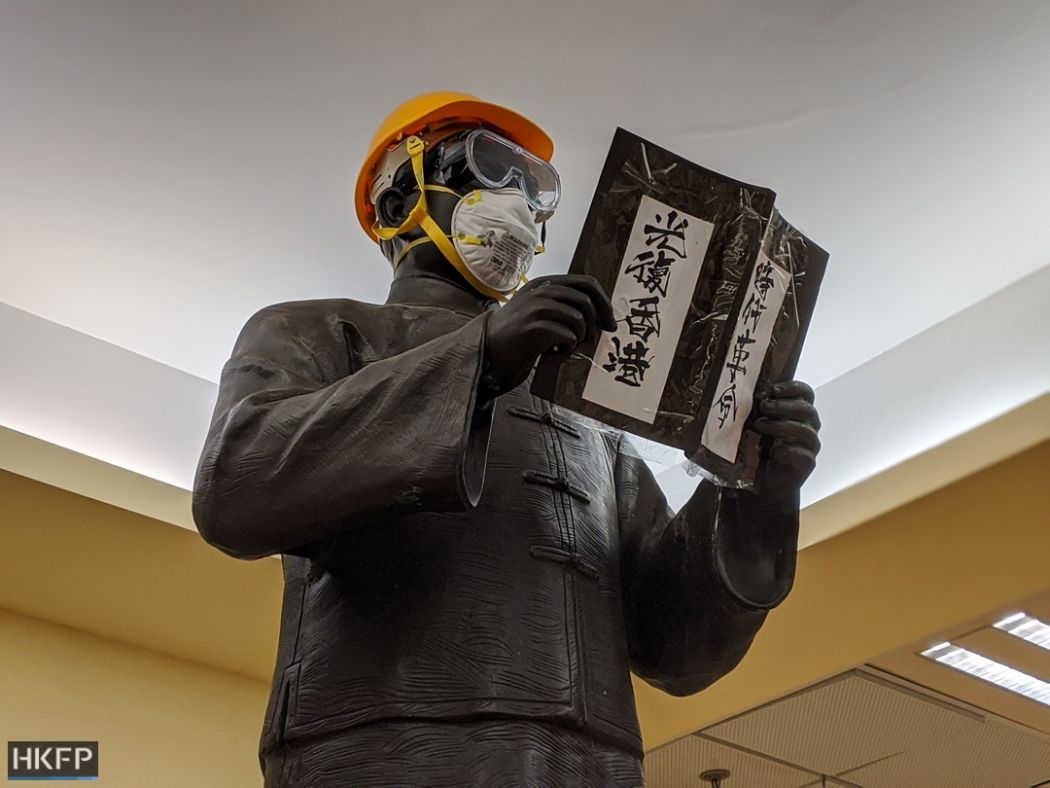
He said that he had spoken to Julian Law, a former political aide of John Tsang when Tsang tried to run for chief executive. As one of the government-approved mediators, Law was considered the figure protesters would find most sympathetic.
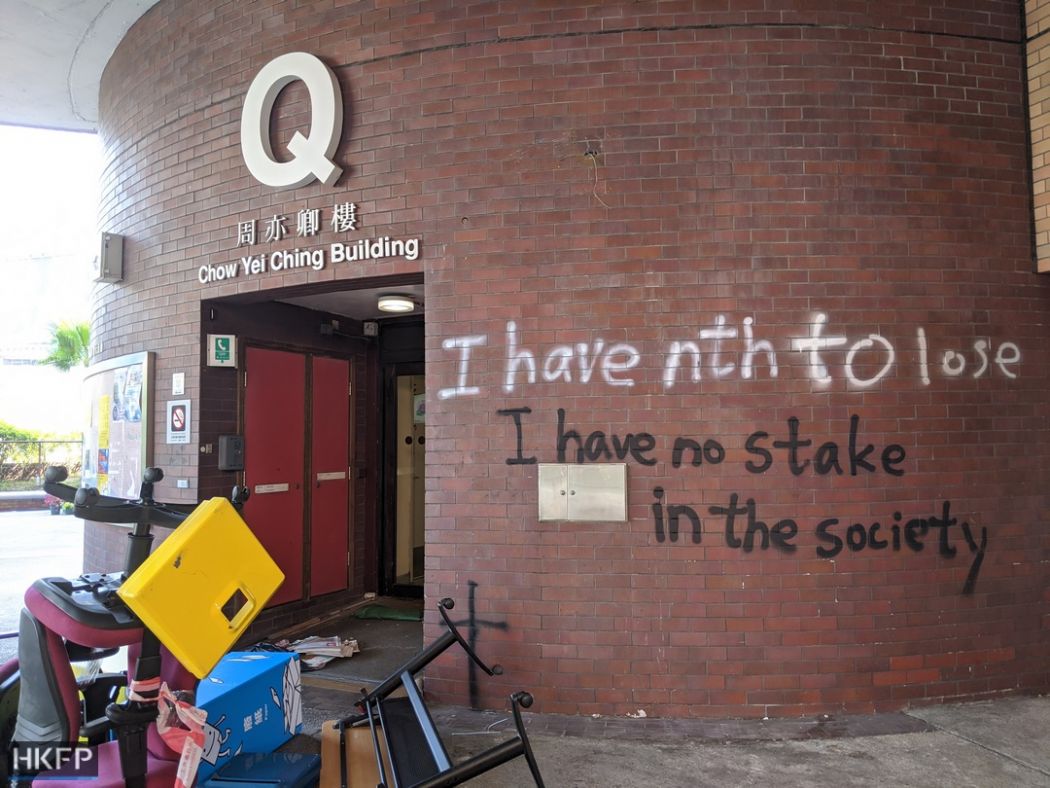
However, even persuasion had its limits: “This conflict only happened because something went very wrong in Hong Kong society. Even if you convince me, even if you brainwash me, that solves nothing. I’m not the crux [of the problem].”
As the siege of PolyU enters its fifth day, there is hardly any resolution in sight. Police have said they will not storm the campus, but protesters have learnt not to take law enforcement at their word.

At the heart of the campus, protesters have laid down pieces of cloth to send a desperate message: “SOS.”
Hong Kong Free Press relies on direct reader support. Help safeguard independent journalism and press freedom as we invest more in freelancers, overtime, safety gear & insurance during this summer’s protests. 10 ways to support us.

